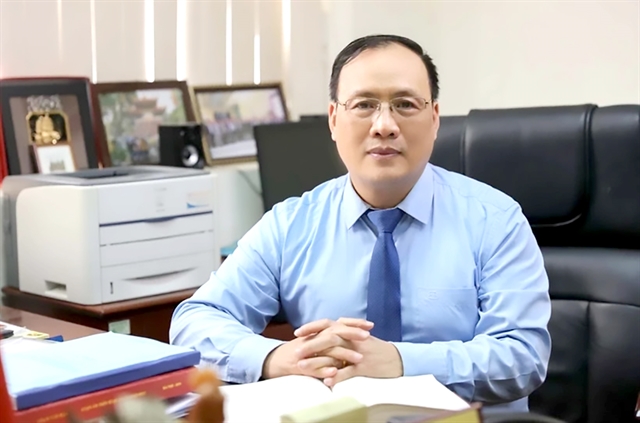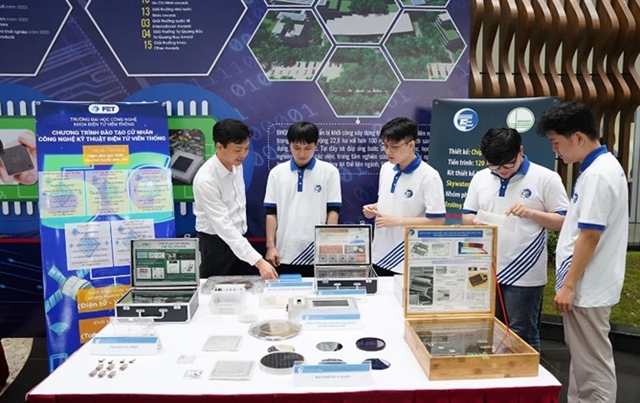 Opinion
Opinion

 |
| Professor and Doctor of Science Nguyễn Đình Đức from the University of Engineering and Technology, Việt Nam National University, Hà Nội. — VNA/VNS Photo |
In light of the Party’s directive to draft a breakthrough policy for education reform, Vietnam News Agency spoke with Professor and Doctor of Science Nguyễn Đình Đức from the University of Engineering and Technology, Việt Nam National University, Hà Nội, to gain his perspective on the proposal’s significance.
What is your assessment of Party General Secretary Tô Lâm’s directive to develop a new resolution aimed at advancing education and training?
Party General Secretary Tô Lâm’s directive is both timely and strategically significant. It demonstrates the Party and State’s deep commitment to education and training, and confirms the view regarding education as a top national priority, central to developing human capital, national intellect and the country’s internal strength. As a professor at one of Việt Nam’s leading universities, I see this as a much-needed and long-anticipated move for the education sector.
The push to develop a new resolution rather than replace existing ones by targeting the most pressing bottlenecks signals a bold and focused approach to reform. It reflects a clear determination to drive meaningful, tangible change. Just as Resolution 57-NQ/TW served as a catalyst for science and technology, this forthcoming resolution on education has the potential to fundamentally shift our thinking and provide the momentum needed to raise the quality and competitiveness of Việt Nam’s workforce.
What do you see as the most pressing challenges and key bottlenecks currently facing Việt Nam’s higher education system?
In my view, higher education in Việt Nam is currently facing three major bottlenecks.
The first is the quality and standardisation of the academic workforce. There is still a lack of consistency and preparedness among lecturers and teaching staff to meet the demands of curriculum reform and modern teaching methodologies, especially in the context of rapid digital transformation, the explosive growth of artificial intelligence and deeper international integration.
The second challenge lies in the outdated governance model. The education sector continues to operate with a bureaucratic mindset, and many universities have yet to experience a truly autonomous and dynamic environment. In recent years, university autonomy has injected fresh momentum into higher education, enabling many institutions to make significant strides in improving quality and competitiveness. However, the evaluation of this policy has been sluggish, and challenges to fully implementing autonomy remain unresolved and unevenly addressed.
The third issue is the disconnect between training and the actual needs of the labour market. There is a clear shortage of demand-driven programmes, particularly those tailored to business and industry needs that aim to develop a highly skilled, practically oriented workforce.
Given these bottlenecks, what breakthrough solutions or policies do you believe are needed to address them?
First and foremost, revising the Law on Higher Education, as well as the Law on Science and Technology, requires a fundamental shift in mindset. This cannot be a patchwork effort aimed only at removing current obstacles. Instead, it must be visionary, designed to create the legal and policy foundations that empower universities to grow, enable scientists to fully contribute and allow research institutions to develop advanced, home-grown technologies.
Việt Nam has set targets, such as building universities ranked among the world’s top 100 and developing science and technology sectors that lead the region and reach the top 30 globally. To realise those goals, the legal framework, including laws on education, higher education and science and technology, must work in concert with the education sector and serve as a driving force for progress.
What is needed now is a set of breakthrough policies. These should include creating a transparent, enabling environment that supports genuine university autonomy, accompanied by clear mechanisms for accountability. At the same time, the legal system must foster stronger connections between universities, enterprises and research institutes.
Building a high-quality academic workforce is equally vital. Policies should focus on training and supporting educators and researchers in line with international standards, while also encouraging collaboration with top global research groups. Attracting international experts, overseas Vietnamese scholars and foreign professors to teach and conduct research in Việt Nam should also be a priority.
The education system itself must embrace innovation, shifting away from passive knowledge transmission toward developing real-world competencies and skills. This means applying new educational models and methods, accelerating digital transformation and incorporating artificial intelligence and big data into teaching and assessment. Multidisciplinary and interdisciplinary approaches should be encouraged, linking academic research more closely with practical demands. Training programmes must align with international standards to ensure students are equipped for global competitiveness.
No less important is investment in infrastructure. Modern laboratories, digital platforms and robust data systems are essential components of a future-ready education system.
Finally, there must be breakthrough policies that offer meaningful incentives to attract and retain talent. In higher education, lecturers are also researchers. They are the cornerstone of Việt Nam’s efforts to advance science and technology.
 |
| Semiconductor-based innovations developed by lecturers and students at the University of Engineering and Technology, Việt Nam National University, Hà Nội. — Photo courtesy of University of Engineering and Technology |
Do you have any specific recommendations for the Ministry of Education and Training as it works on drafting the new resolution?
To begin with, there must be a decisive shift in mindset and approach. The drafting of this new resolution should not follow conventional patterns, but instead aim for bold, transformative change.
I recommend that the Ministry of Education and Training organise broad-based consultations with experts, scientists, education leaders and universities to ensure the resolution is both practical and enjoys wide consensus. Grounding policy in real-world insight will be crucial to its success.
In parallel, the ministry should conduct a thorough review of existing practices and continue refining the university autonomy framework. The goal should be to scale up successful models nationwide, allowing autonomy to serve as a genuine engine for reform. This includes identifying strategic priority areas and piloting innovative models, such as financial and academic self-governance and comprehensive international partnerships, at leading universities, with a view to replicating successful approaches more broadly.
Greater emphasis must also be placed on advancing STEM education and integrating artificial intelligence throughout the education system. English should be introduced as a second official language of instruction, from primary schools to universities. Additionally, I believe Việt Nam needs a long-term national strategy for cultivating a skilled workforce. This should be treated as a strategic priority, on par with the national programme for science and technology development.
The ministry should also set clear goals. By 2035, Việt Nam ought to have universities and academic fields ranked among the world’s top 100 to 200. Higher education must be capable of producing the human capital needed to power innovation, digital transformation and advancements in high-tech and strategic industries.
What are your expectations for changes in the education sector over the next few years?
I hope the new resolution will bring about a true breakthrough in how we approach the development of education, shifting from expansion to depth, from quantity to quality, and from mass education to elite, innovation-driven, globally integrated training. This transformation is essential for building a highly qualified, high-calibre workforce that can support Việt Nam’s aspirations for self-reliance and strength in this era of national renewal, and help realise the ambitious goals set out in the resolution.
I believe we can nurture a new generation of Vietnamese who are knowledgeable, capable, visionary and courageous -- individuals with the talent and conviction to lead the nation forward and help build a prosperous, powerful country that can stand shoulder to shoulder with the world.
I also hope the resolution will serve as a powerful catalyst for Vietnamese higher education, enabling it to make significant strides toward joining the ranks of the top 100 institutions in the region and the world. At the same time, general education must evolve in a more holistic direction, nurturing students who are not only creative and compassionate, but also ambitious and driven by a sense of purpose and contribution. — VNS




